Sony X80K Reviewed at $749.00 (55")
Product Name: Sony X80K
Product Description: 2022 4K LED LCD TV
-
Design - 8.9/10
8.9/10
-
Video Quality - 8.2/10
8.2/10
-
Ports & Connectivity - 8.8/10
8.8/10
-
OS, Apps and Features - 9.2/10
9.2/10
-
Price / Quality - 9.1/10
9.1/10
Summary
Reviewed at $749.00 (55″)
Pros
- Great viewing angles
- Extremely low input lag
- Dolby Vision, Dolby Atmos & DTS
- Nice re-designed remote
Cons
- Mediocre brightness
- Average contrast ratio
- No HDMI 2.1
- No support for VRR or HFR
Cheapest Places to Buy :
*We are a reader-supported website. When you buy through links on our site, we may earn a small affiliate commission at no extra cost to you. Home Media Entertainment does not accept money for reviews.*
Today marks our venture into the world of 2022’s TVs and although very soon we will have detailed articles where we analyze all new releases from all major manufacturers today we will start with one of Sony‘s more affordable offerings for this year. So in our Sony X80K review we will be testing the 55″ of this model that is the direct replacement of last year’s X80J.
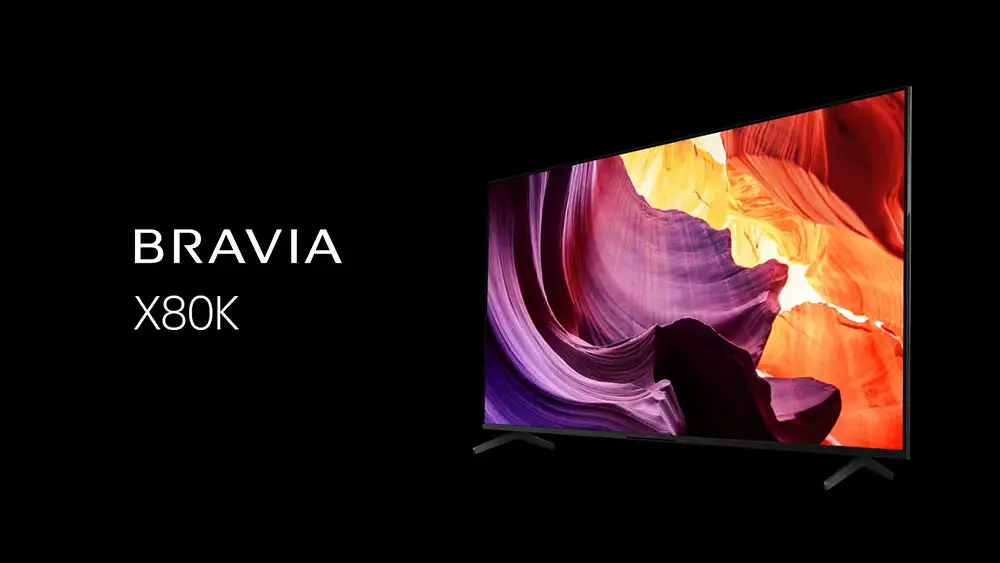
The X80K does not stray much from its entry level nature and by looking at the specs it is extremely hard to find any differences from last year so we were really curious if Sony did anything different in this one or it is just a renamed model. This TV sits at the bottom of their release list so many of the more advanced features have been completely stripped from this one. It still can be of good value if you know what you are getting and that’s why we are here for.
Going real quick over the specs we see that the X80K is being offered in exactly the same sizes as the X80J before that range from 43″ all the way up to 75″. All sizes come with Direct LED backlight systems and use the X1 4K HDR processor along with a TRILUMINOS Pro display. It supports Dolby Atmos, Dolby Vision and DTS and for OS it comes equipped with the latest Google TV that includes Chromecast and Airplay. Unfortunately there is no HDMI 2.1 and as a result it does not support any gaming centric features.
More or less the same as in 2021 but what really matters is to see if the TV performs the same. More on this you can find down below on our measurements so without any further delay let’s begin our analysis.
Design
With the X80K having extremely similar characteristics to the X80J you would expect such a direct replacement to have a similar design also. But to our surprise the X80K resembles more last year’s X85J than the X80J. Overall quality is not bad, but surely it reflects the low cost nature of this release.
The TV’s overall thickness was measured around 2.7″ (6.9 cm) so not much have changed here. Also the connection ports are all looking sideways but these are still hard to reach in case you want to wall mount the TV. The borders around the panel have the typical thickness for a low cost model so don’t expect to find these nice thin borders that some top releases come with.
The back of the X80K features a checkerboard design in order to make it a little bit more interesting, resembling the X85J very much although paying close attention these two are not the same. They just look similar. On the far right are the connection ports, on the far left the power connector and in the middle the VESA wall mount holes. A pretty much standard sight.
The design of its stand follows the fairly standard bench type that offers the TV more stability but on the other hand you need a bigger furniture if you plan on placing it on one instead of the wall. The TV was fairly stable with the stand provided and there was little wobble overall.
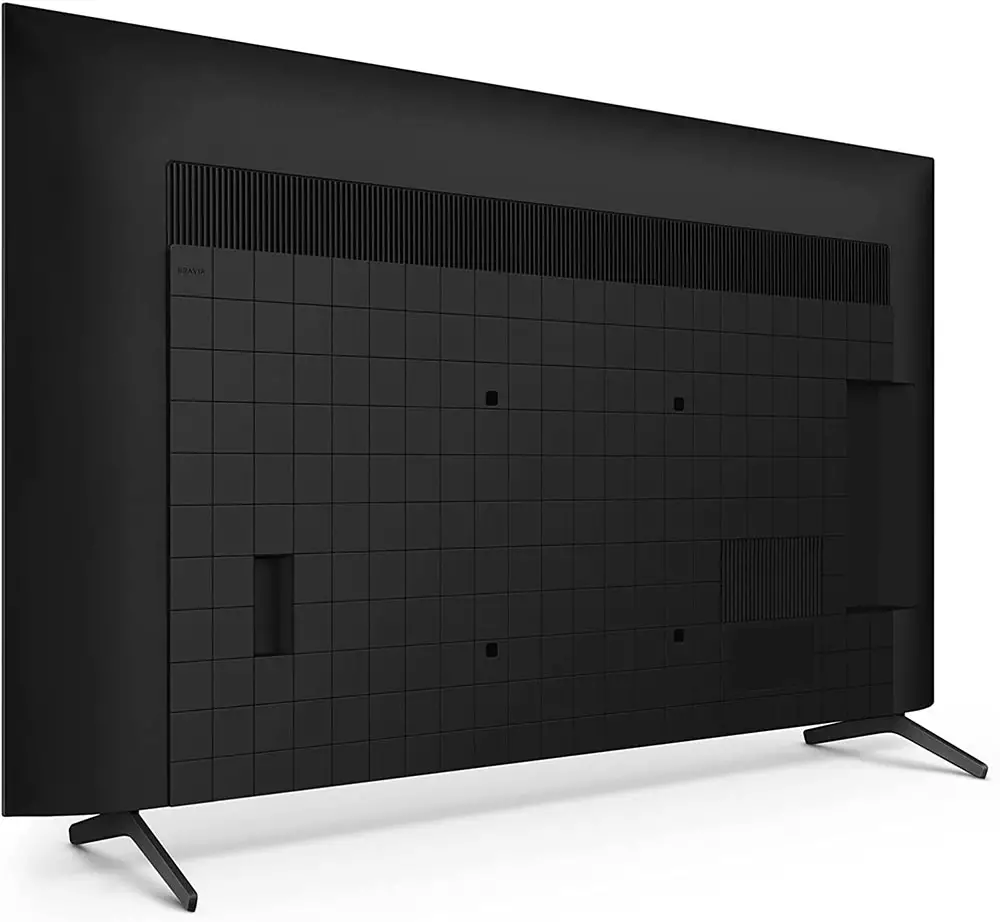
Lastly as far as cable management is concerned there are special clips that attach on the back of each leg in order to drive your cables through them instead of having hollow legs like other stands of the same type.
In 2022 Sony continues to improve on their remotes and it seems that slowly Sony TVs come with something that actually resembles a smart remote. This means that this year the remote buttons have been reduced as the numerical pad has been taken out (there is a simple button for that, that brings a numerical pad on screen) and there has been a bit of a layout change.
As a result the remote of 2022 feels simpler, less cluttered and easier to handle. Design wise the remote of the X80K is no different from the other higher tier offerings. The only aesthetic difference is that this comes with a plastic body while the more expensive models use one made of metal.
We really liked Sony’s 2021 remote but to be honest it had too many buttons with many of them never to be used. So making the remote smaller and simpler was the right thing to do and we do love what they have come up with. Slow but steady Sony’s remote start to feel a lot like Samsung’s One Remote which is something that Sony should have done for some time now.

Overall the X80K has the quality you should expect from its category. The redesigned remote was the right move so we could say that there is an actual improvement over last year.
Video Quality
Processor technology used
The Sony X80K seems to be using the X1 4K HDR processor although there is no information if this is exactly the same chip that the X80J was using last year. But looking at the specs sheet it seems to support all the same features so it is highly likely that Sony hasn’t changed anything here meaning that in terms of picture processing the new model is like for like with last year’s model.
One of its characteristics of the X1 processor is Object-based HDR remaster with which the color in individual objects on screen is analyzed and the contrast adjusted, unlike most TVs where contrast is only adjusted along one black-to-white contrast curve. Because objects are remastered individually, this TV can reproduce greater depth, textures, and more real pictures.
There is also Dynamic Contrast Enhancer which automatically adjusts contrast settings according to your environment in order to provide clearer and more defined colors.
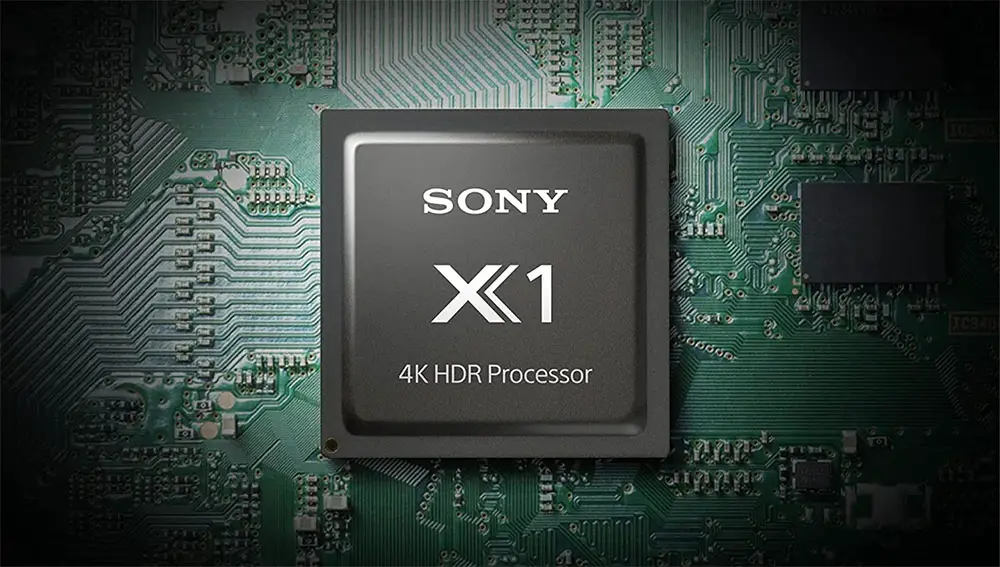
And for last we left 4K X-Reality PRO. By using this picture processing technology the X80K is able to up-scale any kind of source content up to 4K with remarkable results. 4K X-Reality PRO is using a variety of noise reduction techniques to sharpen and refine images while patterns in images are compared with patterns stored in a unique database to find the best hue, saturation, and brightness for each pixel.
Just for the shake of our review we tried a selection of clips that we keep in handy for such occasions and the X80K did brilliant in all kinds of resolutions from low definition ones up to 720p and 1080p. As we always say the quality of the source material is very important when it comes to the upscaled results so don’t expect any miracles here. But from what we saw the TV was free from any notable artifacts due to the process.
Lighting technology used
While last year Sony was using two backlight systems depending the category of the TV for 2022 this have been expanded with the new miniLED models. Unfortunately the X80K seems to be getting the short end of the stick for one more year as we find the low performing Direct LED one without Local Dimming.
The Direct LED system is using light behind the included IPS panel but is much less capable than a FALD system which means far less brightness output, less light accuracy and lower contrast which means that blacks will appear for greyish than true blacks. And with the X80K’s IPS panel low contrast capabilities the omission of Local Dimming makes things even worse.
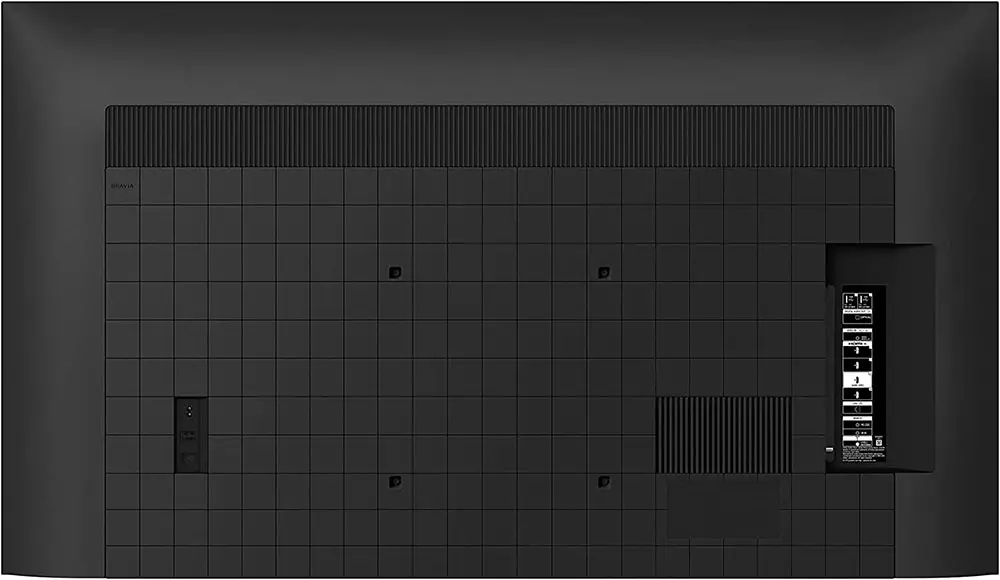
To be honest we were not surprised as having a Direct LED system is pretty common the last few years in Sony’s lower end category and in line with what we have seen in many other TVs with a similar price. At least having an IPS panel in combination with the Direct LED light system makes the X80K much less prone to any major burn-in problems.
Brightness / Contrast
One of the most important characteristics of a HDR TV is no other than its brightness output. It’s unfortunate that many lower tier HDR TVs don’t have the necessary brightness output to make HDR justice even with manufacturers advertising them as such. And with so similar hardware to the X80J we were not expecting our measurements here to stray much from our 2021 findings.
In our SDR brightness test we used the Custom Picture mode with Expert 1 color temperature and maximum brightness. In our 10% white window test the X80K was able to output 370 nits of brightness which is ok for SDR content and extremely close to the X80J.
As for our HDR brightness test over a 10% window we managed to get 405 nits which is not very good and cannot create very bright highlights when it is needed. Again the X80K measured almost the same as the X80J. The difference is extremely small to be noteworthy and could very well vary between different panels.
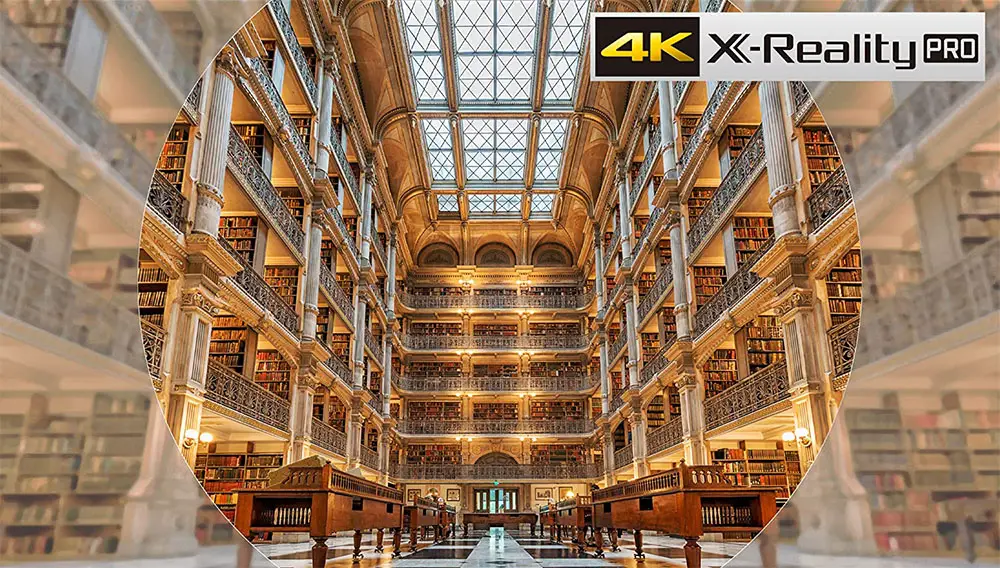
As always you can get slightly more brightness, if you need it, with the Vivid mode but this will cost you in color accuracy so basically it is a tradeoff that you have to live with. But to be honest the change is not all that big to be worthwhile.
In terms of contrast the TV was disappointing. The 55″ we tested was using an IPS-type of panel and these in general don’t fare very well with black levels. Blacks will appear more grey instead which is a problem that will show its ugly face a lot if you are watching in a low lit room. The X80K seemed to even perform worse here than the X80J which made matters even worse.
Last year the 50″ size of the X80J seemed to be using a VA panel instead of an IPS one. This may very well be true for 2022 also but we cannot confirm this at the time of writing this review.
Viewing angles
Here things are not much different from last year. The X80K comes with an ADS panel which is similar to IPS in structure and characteristics and this usually means good things when it comes to its viewing angles especially in comparison to TVs that come with VA panels. The X80K is not featuring any wide viewing angle technology that could potentially improve even further its performance but for an IPS equipped LCD TV they are still very good.
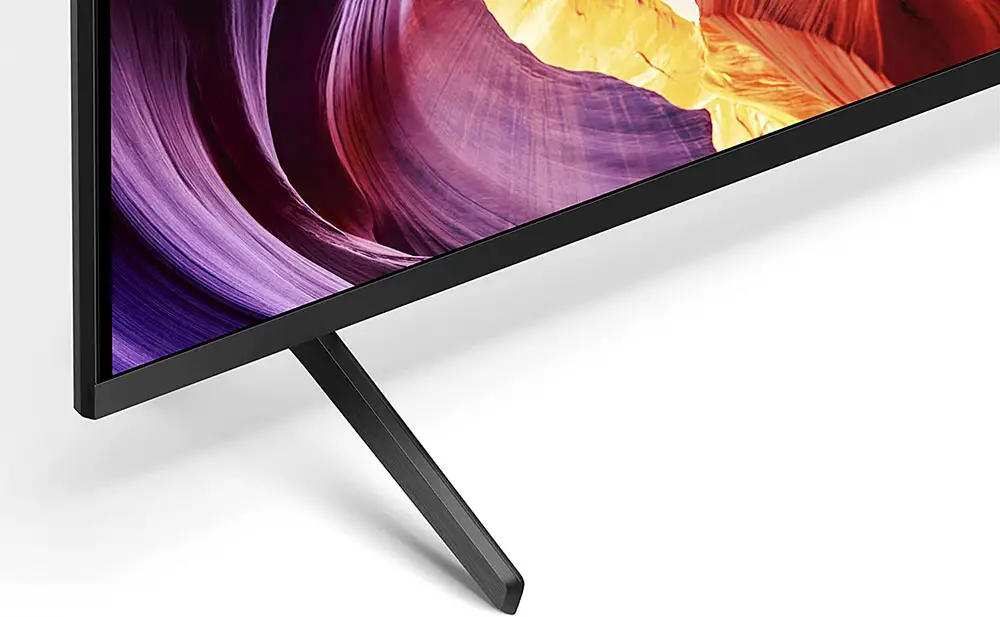
No major differences here as the X80K retained its image quality up to about 40 degrees of angle which can be considered very good making this model ideal for family rooms where many people will be watching from different angles. Anything more than that and the overall quality starts to degrade a lot. But to be honest anything more than that will make viewing rather difficult to begin with so this shouldn’t be a problem at all.
As we said above we cannot comment on the 50″ size since we could not confirm the kind of panel this one was equipped with.
HDR support
HDR support is another area where there is practically no difference from last year.
As such even the most budget friendly 4K X80K model we have here gets the more advanced Dolby Vision. Now the limited capabilities of the X80K cannot really show Dolby Vision as it was meant to and it is more of a marketing thing than a feature that the X80K can really benefit from.
In total the X80K features the standard trio of HDR protocols that include the basic HDR10 which is required for 4K UHD playback, HLG that is used in broadcasting and lastly the more advanced Dolby Vision that uses dynamic metadata and offers the best quality from the three available.
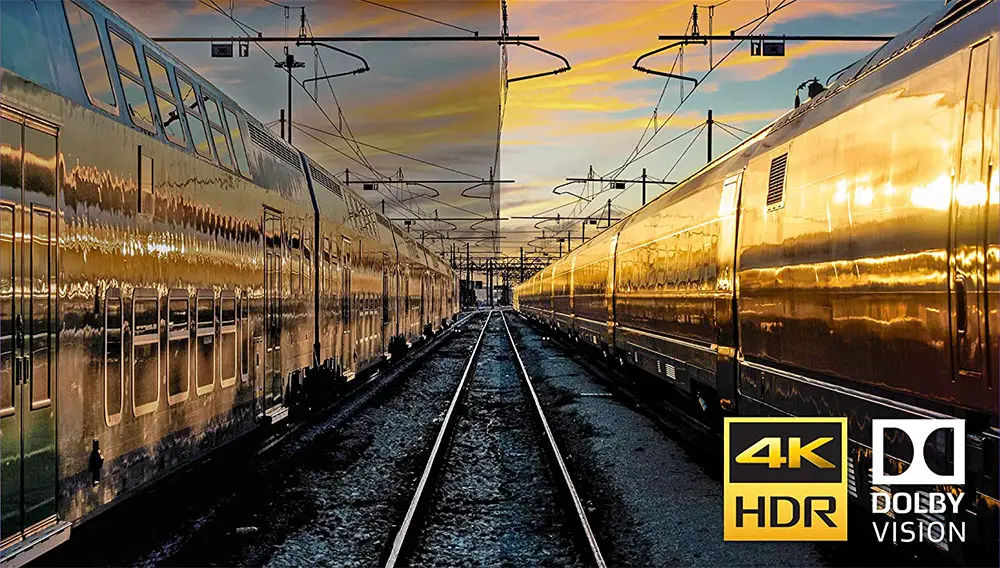
For one more year it seems that Sony is boycotting Samsung’s HDR10+ and frankly if there is no major development in the future we don’t see Sony ever supporting it. If you really need both HDR10+ and Dolby Vision you will have to look for another manufacturer like Panasonic or Philips among others.
Color coverage
The X80K comes with wide color gamut support which is one of the fundamental requirements for HDR content viewing as it can make the colors look more vivid and lifelike. From a specs perspective nothing have changed from last year as the same tech seems to be used. One of these technologies is what Sony calls a TRILUMINOS display which is a technology that the TV uses in order to display a wider color palette and more natural shades and hues. The X80K is using a Triluminos PRO display to be exact.
As for the numbers we measured a 89% coverage in the DCI-P3 color space which is really good and exactly the same as the X80J. On the more wide REC.2020 color space we got a coverage of 66% and once again the numbers haven’t changed at all.
So in terms of color reproduction there is no improvement on the X80K which is not surprising. In terms of color banding we did notice a bit with some dark gradients but overall the TV could handle different shades really well.

Motion performance
The X80K is using a 60Hz panel (or 50Hz depending on your region) which was to be expected. We again find exactly the same Motionflow XR 240 technology which is Sony’s take on smoothing out the motion of the screen.
You have the option to use either the standard motion interpolation system or use the Black Frame Insertion (BFI) interpolation that is adding black frames in between individual frames and can potentially smooth out motion. BFI can be enabled by turning Clearness to max if you use the Custom setting in the MotionFlow menu. BFI did help with slightly smoothing the motion but the TV showed very similar duplication issues we had noticed in the X80J. It was not a major issue but depending the content it was obvious to notice. And keep in mind that in general BFI has also a negative effect on brightness due to the black frames that are inserted.
Keeping in line with its low end nature, the X80K does not support any kind of VRR technologies either it be HDMI Forum VRR, FreeSync or G-Sync. These come only with HDMI 2.1 so if you really want them you will have to look for the next model in the series that have them, the X85K.
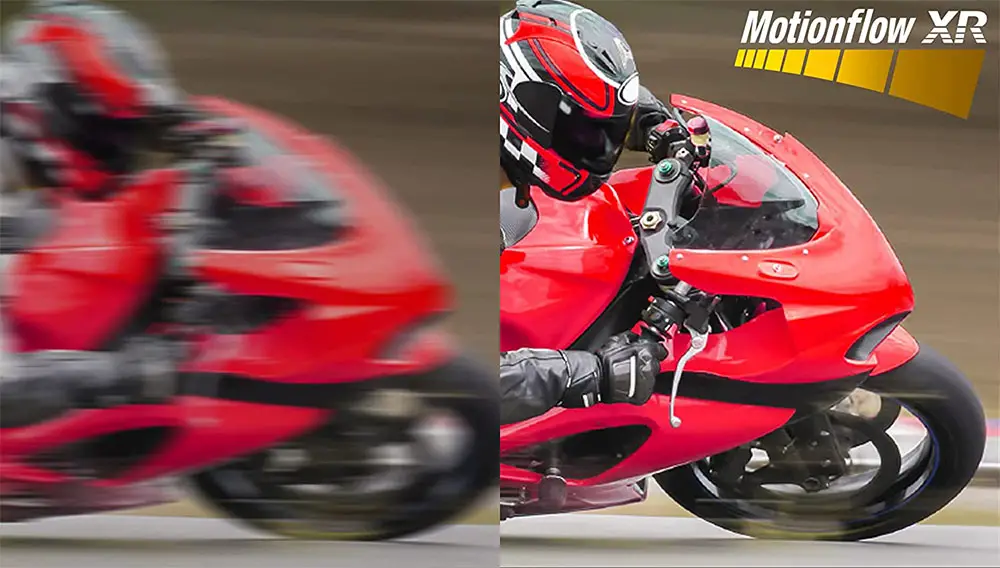
So in general we didn’t notice any major differences here. The X80K is the continuation of the X80J and in terms of performance they behave almost the same.
Input lag
Another area where we don’t see any meaningful differences is in its input lag performance. The X80K behaved the same as last year and the number we measured this time was 11.3ms which is really excellent, no doubt about it.
This number was very similar for both 1080p and 4K resolution at 60Hz when combined with Game mode. Outside Game mode input lag went up to 133ms which is surely forbidding for the most serious gamers but can still provide a good gaming experience for casual users that tend to play slow paced games.
The X80K may be missing certain gaming centric features like VRR and HFR but at least it does support Auto Low Latency Mode (ALLM) and will switch to the appropriate Game mode when a video game console is detected.
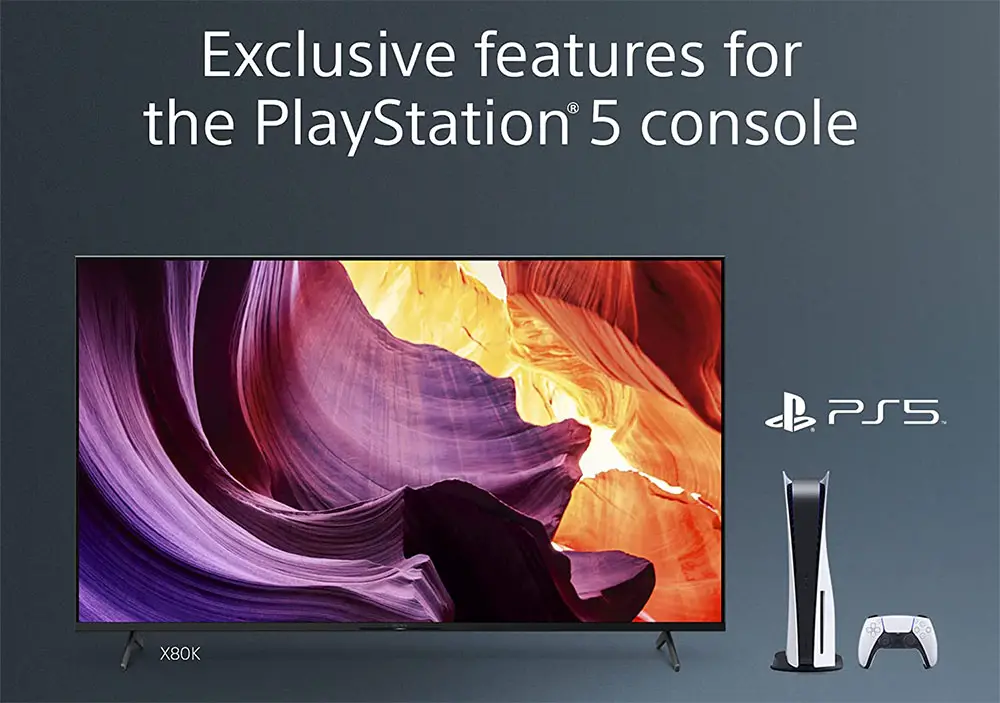
Before closing this part of our review we connected our PS5 and used our F1 2021 disc for a few laps. Even without these HDMI 2.1 features the TV can be an excellent low cost option if you are tight on budget. With the Game mode enabled all our commands registered blazing fast and there was no slow response or delay during our session.
Image quality impressions
The X80K did behave extremely close to its predecessor across the board. There were minor differences here and there but these could very well be due to the different panel and not because Sony did actually change anything in this release.
Everything from upscaling capabilities, color reproduction, gradients, motion performance and input lag measured very close or exactly similar to last year.
If you were hoping to get HDMI 2.1 in this one don’t, it still goes for the older HDMI 2.0 ports so it also misses on VRR and HFR. But even without these the X80K can be a really good budget gaming TV.
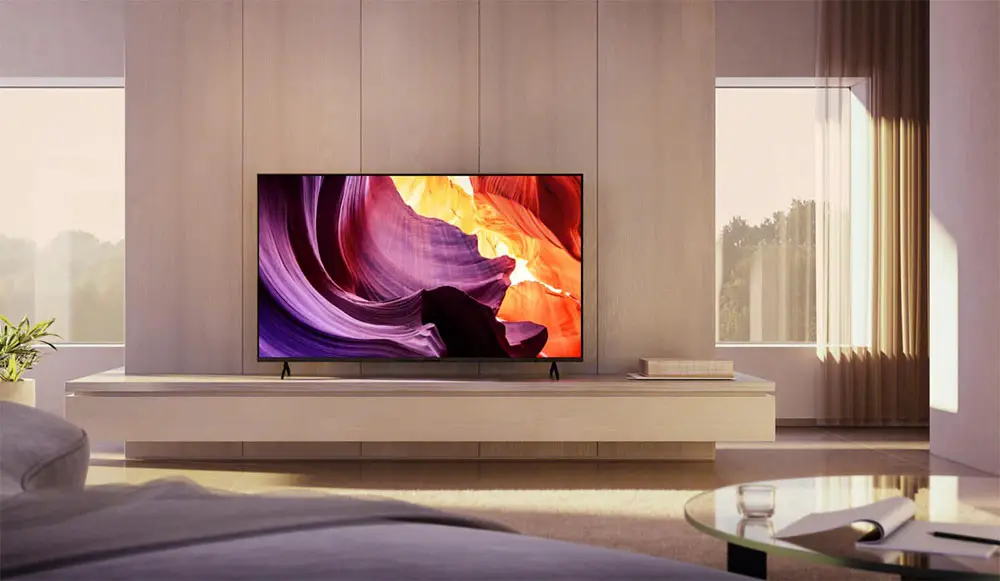
Audio Quality
Audio is another area where nothing have changed as the X80K is using a standard 2.0 channels audio system with 20 watts of total power. Again a bass reflex system is utilized and along with their X-balanced speakers, as they call them, they have tried to improve the overall output without changing much in terms of the audio setup being used.
This X-balanced speaker is basically a specially shaped driver in order to provide the best audio result possible for the slimline factor of the TV. Obviously going for a round driver would have a negative effect on the overall TV thickness while an oval driver compromises sound quality. The specially shaped X-balanced driver combines the best of both worlds, at least according to Sony.
We did try various content on the TV to see if there was any major differences but honestly the X80K behaved as most low cost TVs do. For casual viewing including news broadcasting, sports and talk shows it proved to be an adequate handler of the audio output with clear dialogue and energetic highs. But if you are expecting to get any kind of cinematic immersion you will be greatly disappointed. So if you plan on using the TV for movies we strongly suggest a dedicated audio system or soundbar.

The TV may be a low cost offering but it comes with both Dolby Atmos and DTS support. But having Dolby Atmos doesn’t mean that the TV can reproduce it the way it is meant to. Also keep in mind that Sony is the only of the big three that still supports DTS audio and through its eARC port it can pass not only Dolby Atmos but also DTS:X.
Ports and Connectivity
Another area where we find minimal changes is in the connection ports. All of them are grouped together in a special inset on the right side of the back panel. All of the ports are looking sideways but they are still hard to reach if wall mounted.
Going from top to bottom we get two USB ports for connecting external storage or powering various devices, a digital optical audio output for connecting older equipment that does not support HDMI connections, a composite video input, four HDMI ports for connecting all your devices, an Ethernet port for wired connection to your network, an RS-232C port for control, an IR input and the usual antenna/cable connector.
The X80K continues the trend of having a USB 3.0 and we applaud Sony for this. Usually manufacturers don’t seem very fond of using the newer USB ports and rely mostly on the archaic 2.0 version even for many of their top premium models so seeing the X80K, which is such a low cost TV, getting one USB 3.0 is definitely a cut above what most other manufacturers offer.
Also we noticed that Sony took out the analog audio jack that have been included with most TVs until now. Is this an indication that the analog port is completely taken out? Only time will tell.
Also another thing to mention is that all HDMI ports are the older 2.0b variant. The X80K is the first 4K TV in this year’s lineup that does not support HDMI 2.1 at all and you will have to look at the next in line model, the X85K, if you absolutely need this. At least they support eARC and can pass-through both Dolby Atmos and DTS:X audio to equipment that support these.
In terms of wireless capabilities things are pretty much the same as all other Sony releases so the X80K comes with built-in WiFi (802.11ac) along with Bluetooth v4.2. No Bluetooth 5 for one more year unfortunately.
OS, Apps and Features
Last year Sony made the change from Android TV to the better in our opinion Google TV. And it seems that from now on this will be the new OS Sony will be using in all their TVs which is for the better really.
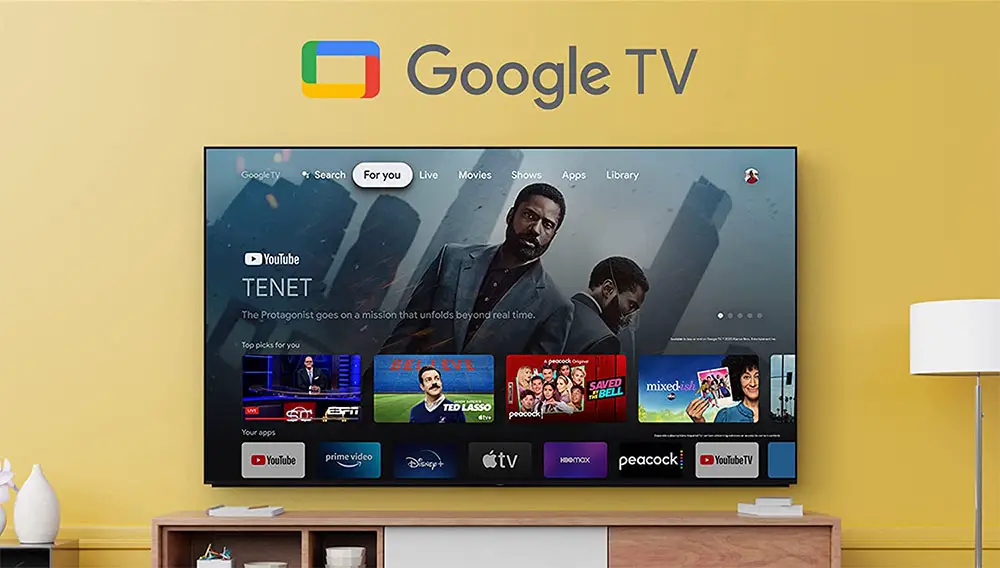
Now many of you may be puzzled what the difference between Android TV and Google TV is. Well, it’s not so much difficult to understand what has changed really. Google TV is still Android TV but with an extra layer on top of it. Think of it like it is in Android smartphones. Most manufacturers that use Android in their releases they use on top of that their own layer that gives this extra something to their UI that make them unique both in appearance and functionality.
The same is with Google TV. You still basically use Android TV but there is the extra Google TV layer on top in order to make the UI feel different both in looks and functionality. It seems that all 2022 Sony TVs come with the same Google TV 10.0 we saw in last year’s models so almost everything is once again the same as what we experienced a year ago.
Google TV seems to have been designed around recommendations, either it be movies, TV shows or applications and this seems to be the main focus of the new OS in general. During setup the wizard asks you of what specific streaming services you use in order to customize the Home screen recommendations.
Keep in mind that Google TV is still Android at its core even though it looks different. But with Google TV things seem more fluent, more direct and more easy to navigate around.
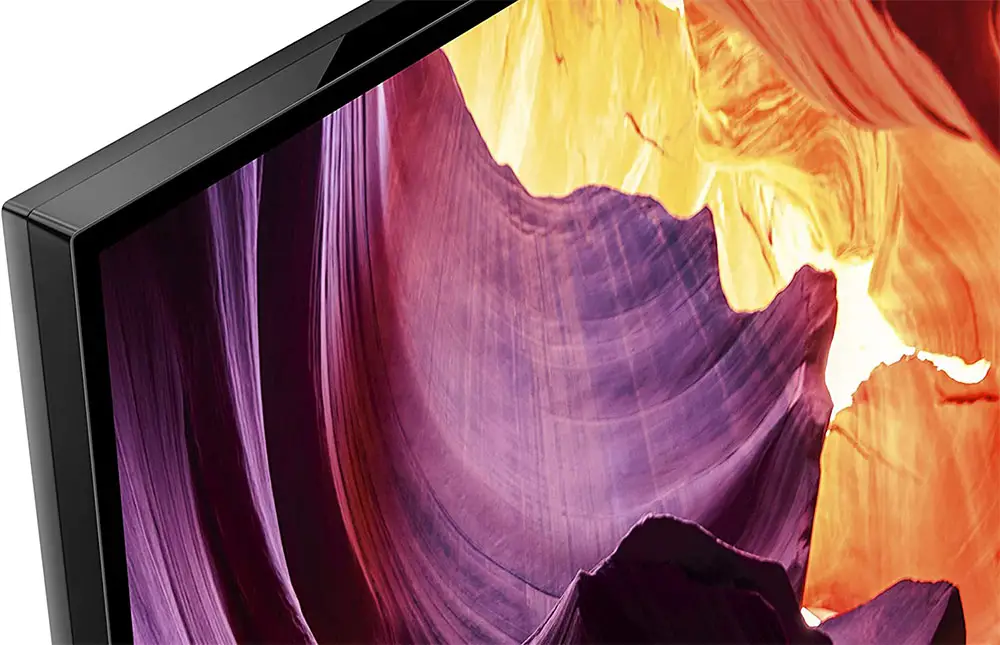
If there is one thing that Android has in abundance that is huge app support. Through the included Google Play Store you can find literally thousands of apps that you can download and use except from the pre-installed ones. There is so much content available that you will definitely find the ones you are looking for and the list goes on and on.
All the big names are obviously present like Google TV, Disney+, Netflix, Amazon Video, Hulu and Youtube as well as Pandora, Tidal, Google Play Music, Spotify or iHeartRadio. As always some of them are region dependent so make sure the ones you are interested in are working in your area. Lastly many apps like Netflix and Youtube support playback for both 4K and HDR content for those interested in it.
Chromecast is also available here and it gives you the ability to stream content from other Chromecast enabled devices like mobile phones and tablets directly to the TV. Voice control is also present but it seems that it is a bit limited compared to other competing models. By that we mean that although you can use the remote’s built-in microphone to give commands to Google Assistant for Amazon Alexa you will need an external Alexa enabled device to work. Additionally there is also Sony’s Voice Search available.
We have seen the same thing in many other Sony TVs and probably this has to do with the fact that it’s using Google’s Android system and thus having Alexa built-in was not possible. With voice control you can issue various commands to the TV but functionality extends far beyond that as you can control any smart devices you have in your house also.
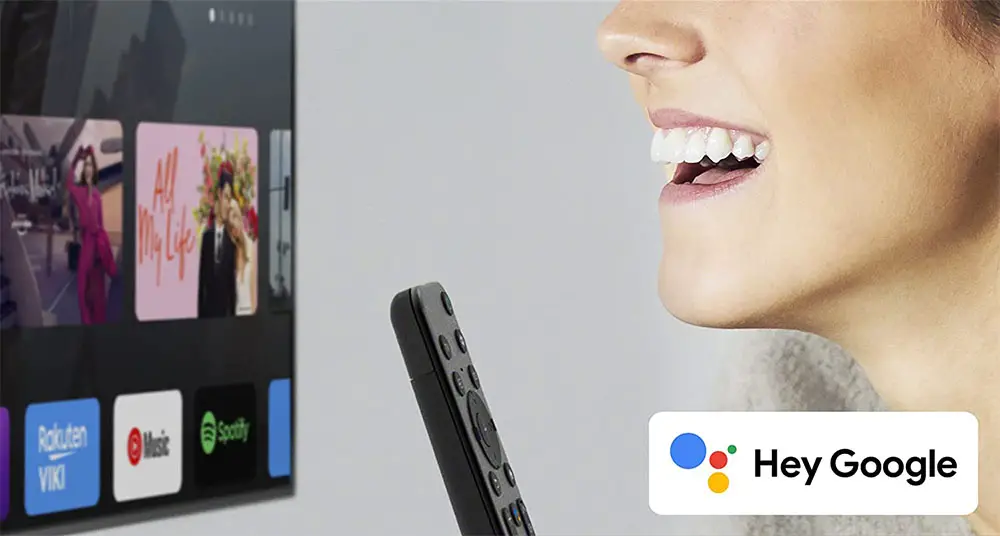
There is also a built-in media player available that you can use to playback various video and audio content from an external storage connected to the USB ports. Support is pretty good for a built-in player and compared to the competition we can admit that it will be able to play more files in comparison but in general don’t expect it to replace your dedicated media player box if you use one. If there is a file that is not following the usual standards it will not play it, something that a dedicated player might will.
As always we did try a set of different files that had different resolutions and various codecs and most of them had no problem either to start or playback fluently. Some that were not so standard refused to play but these will be the rare case and not what you should expect most of the times.
Sony has also added support for both Apple Airplay 2 and HomeKit. With Airplay 2 you can stream content from other Apple devices on your TV while HomeKit lets you control certain aspects of the TV through your mobile device. Also if you are all Apple then keep in mind that the X80K supports Apple TV which is Apple’s online streaming service in order to have the complete Apple’s suite. So in case you favor Apple’s products the X80K will certainly cover you in this respect.
For one more year all Sony TVs are Calman Ready although to be honest we fail to see how this can benefit many of the lower tier offerings. To address color variations from the production process, the TV is ready to use Portrait Displays’ high-performance Calman auto-calibration software.
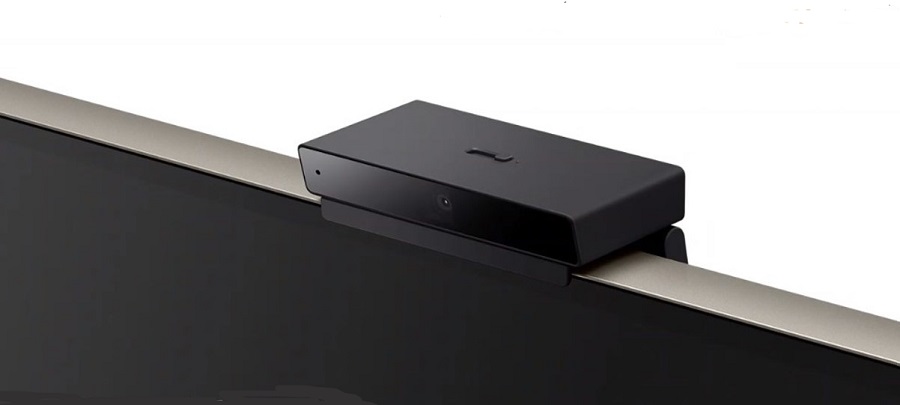
This allows an unprecedented level of calibration and the ability to fine-tune adjustments simply not possible through conventional picture settings. It delivers high-fidelity color reproduction that’s true to the original TV signal, and can even adapt to the subtlest changes in color that may occur over time.
Although almost all features make a return from last year there is one new that Sony added for 2022. It seems that all their TVs now support the new Bravia Cam which is an optional accessory that can be purchased seperately and will further enhance the functionality of the X80K.
With the Bravia Cam the TV can detect where you sit in the room and adjust the picture and audio accordingly. Other functions include gesture control and power saving features among others.
One last thing we need to mention is that there is no official app support for controlling the TV. If you want to control the X80K using your mobile device you can use the Android TV app made by Google that supports many of Sony’s TVs the last few years. It’s nothing major but can be a nice alternative to the included remote if you want to have more options.
The X80K brings everything we saw last year with minor enhancements and additions. There is no major changes and to be honest it feels like manufacturers are running out of new ideas to add to their OS. But what is there is more than enough for most people anyway.
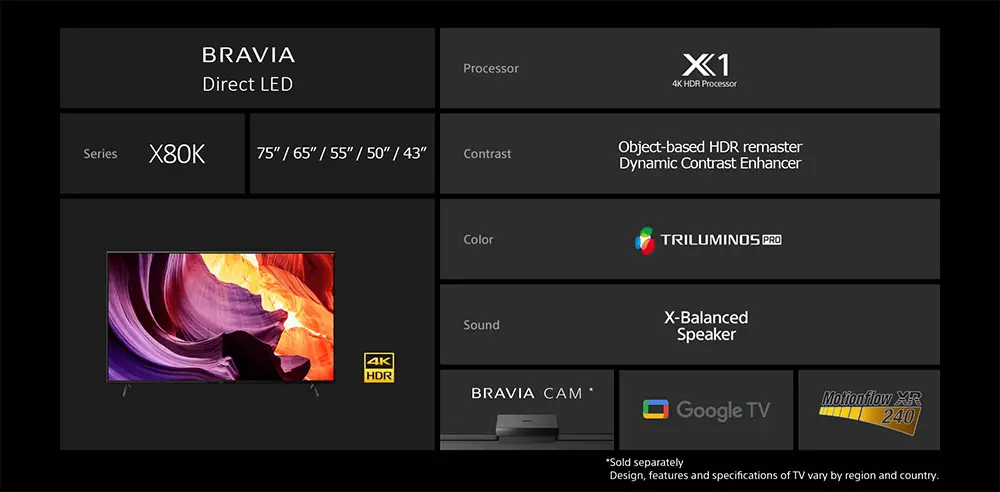
Final Thoughts
As was the case last year, Sony’s top offering draw most of the attention but this doesn’t mean there is no market for their lower end offerings. On the contrary the market for such affordable TVs is bigger than ever and the X80K will surely find its place among the other low cost units.
Nothing major has changed from 2021 and the inclusion of the X1 4K HDR processor meant that the X80K can handle any content really well for its price. Viewing angles were good due to the IPS like panel it uses, colors were good enough, there is support for Dolby Vision, Dolby Atmos and DTS and Google TV is a very good and easy to handle OS. We also liked the redesigned remote a lot more than last year’s one.
Again the X80K suffers from all the same problems the X80J did. Brightness output is not good at all and it cannot really make HDR content pop the way it should. Also its contrast is mediocre to say the least with blacks appearing more grey than they should. Audio wise the simple 2.0 channels system will suffice only for casual use and although there is Dolby Atmos support don’t expect anything major out of it. Lastly it misses HDMI 2.1 which may be a deciding factor for many gamers.
Closing our review we would say that the Sony X80K feels more like a small refinement than a real successor to last year’s offering. The TV may not stun you with its performance but for the price you pay it surely has its strengths and can be a great purchase if you are extremely tight on budget.
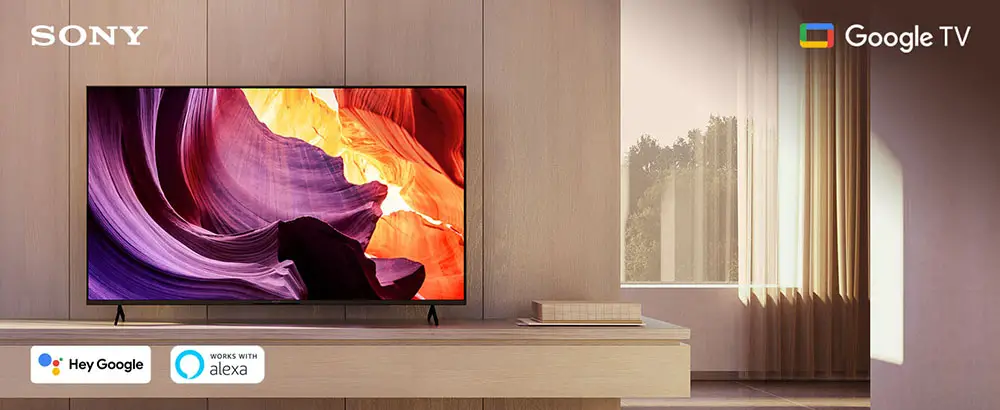
For more reviews you can check our dedicated 4K LED LCD TV reviews list or even look at our Product Reviews Table where you can find the brand and specific product you are looking for.
Cheapest Places to Buy :
*We are a reader-supported website. When you buy through links on our site, we may earn a small affiliate commission at no extra cost to you. Home Media Entertainment does not accept money for reviews.*

The TV does look like a repackaged X80J indeed. I guess there is not much they can do in this price anyway and they prefer to focus on the higher end where people tend to upgrade more often. I would love this to have HDMI 2.1 but it seems that it will be a while before they completely make the jump to HDMI 2.1.
Hello Michael. Indeed there is not much difference in the X80K this year. Surely HDMI 2.1 will become the prevalent port even in the low tier category but it will be a few good years until we are there.
I am eyeing for a cheap TV and I was between the X80K and the X72K. Unfortunately the X72K is not available yet in my area so the X80K will have to do although a bit higher in price than I wanted. Does its Google TV have the full functionality that all other models have?
Hello Rosie. Most basic smart and online functions are still there. It is missing a few more higher end features but since you are looking for such a cheap model then surely what the X80K has will be more than enough for you.
Your overall rating is 8.8/10 which appears very good for this set. But the cons you mention throughout the review would lead one to believe the TV is below a 7 rating. Odd rating system.
Hello Marty and thank you for your comment. In the cons I describe all the weaknesses the TV has in general. But when it comes to our scores we always take into consideration the price something that many other reviewers don’t. If the TV would cost $1500 then with the cons I describe it would definitely get a 7/10 at max or even less. But as we always have to consider the price you pay for what you get this is why the final score gets higher. Our scoring system not only takes into account what the TV can do but also at what price it can do it. This is done because if we wouldn’t take into account the price then all middle or lower tier TVs would get extremely low scores which is not fare as these exist for a reason.